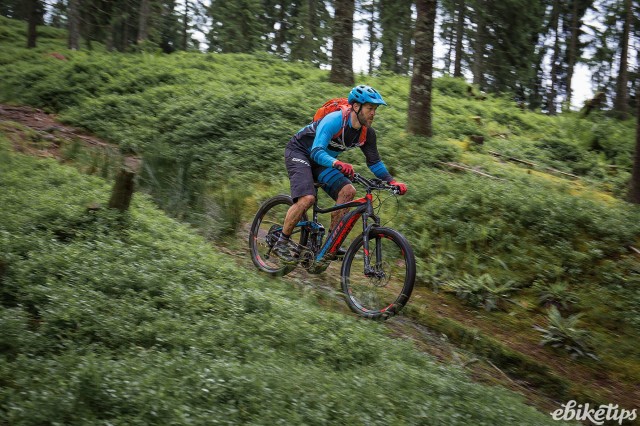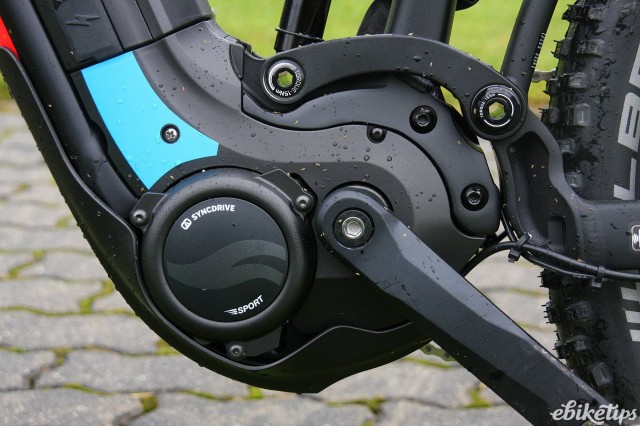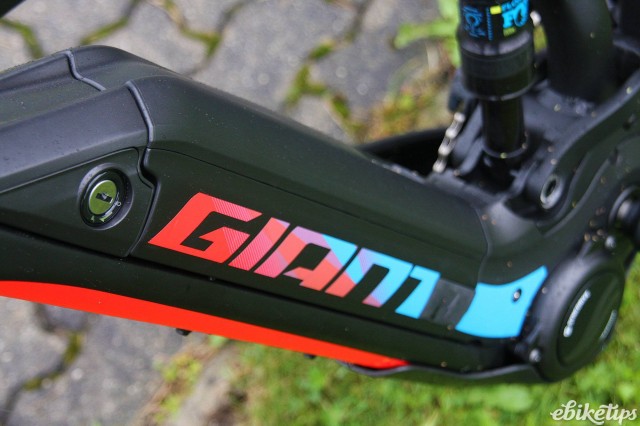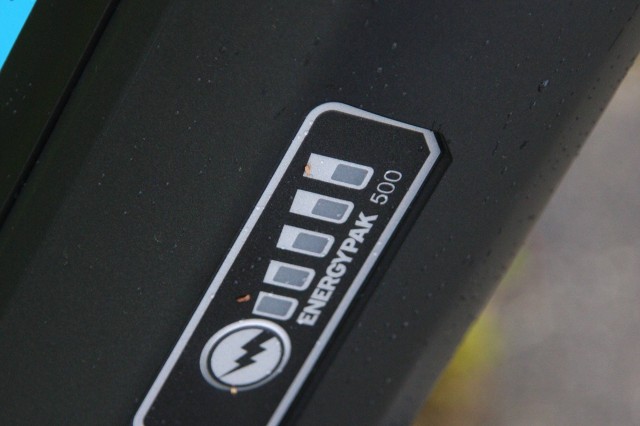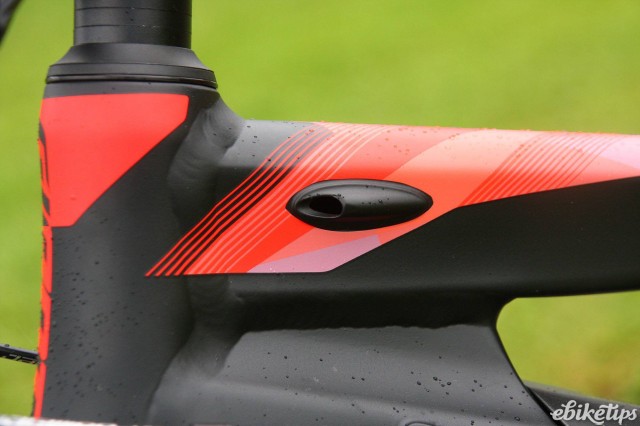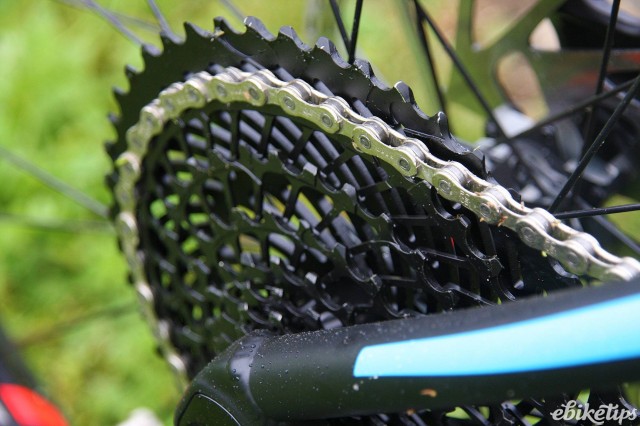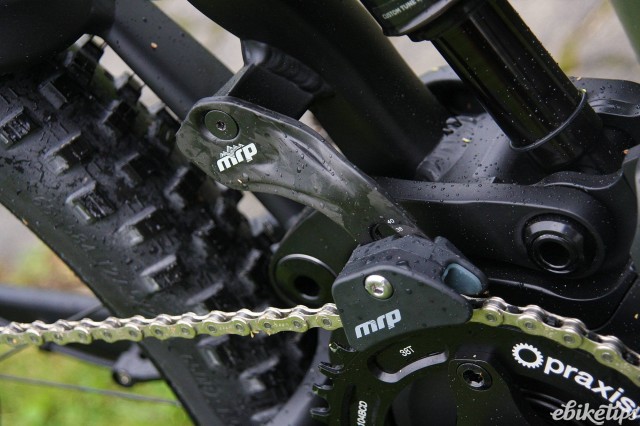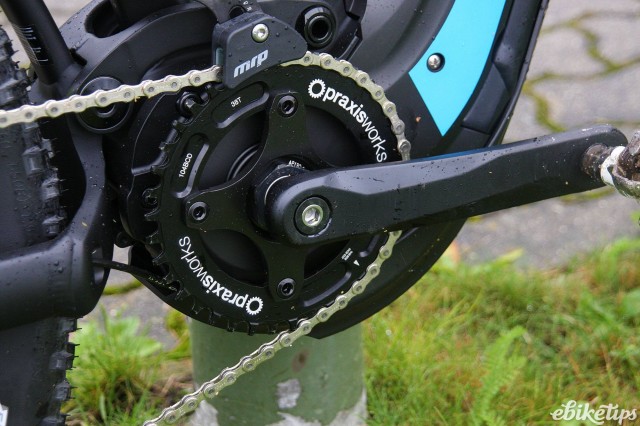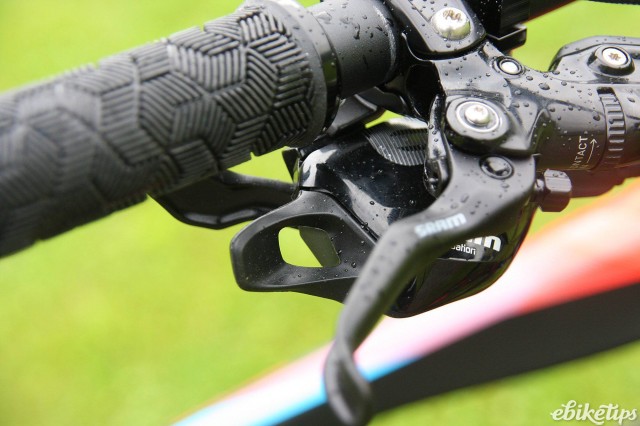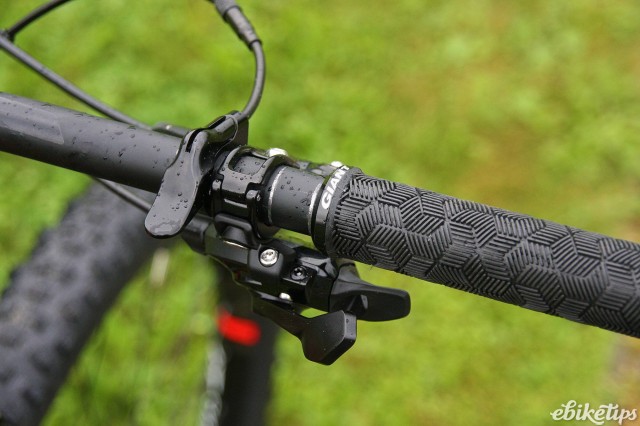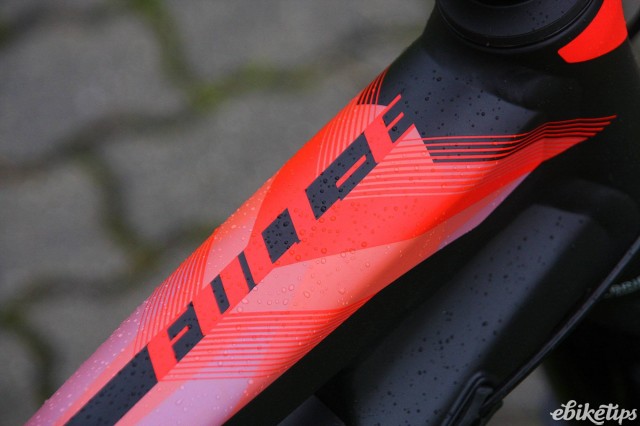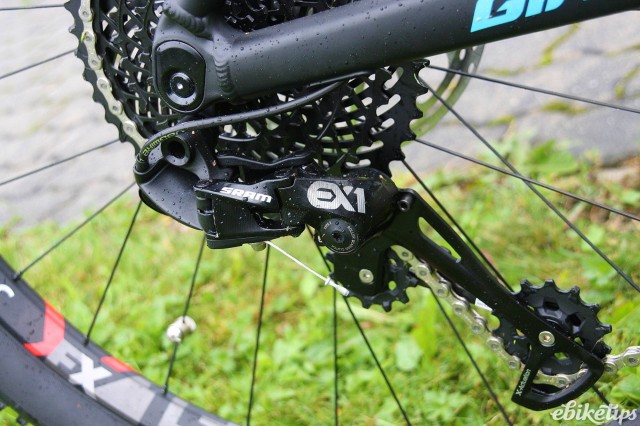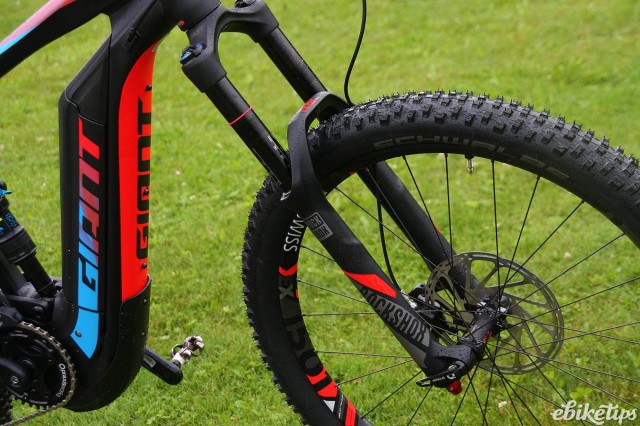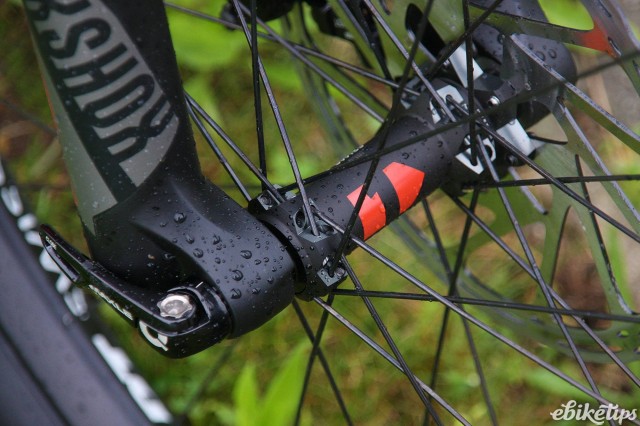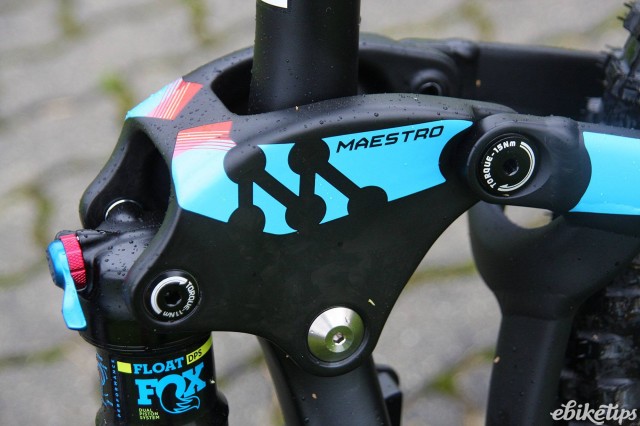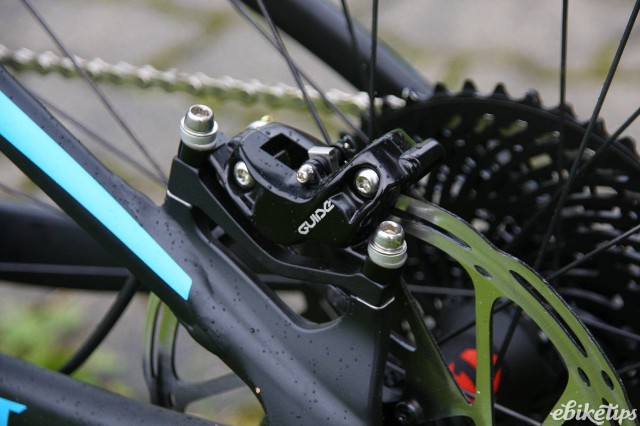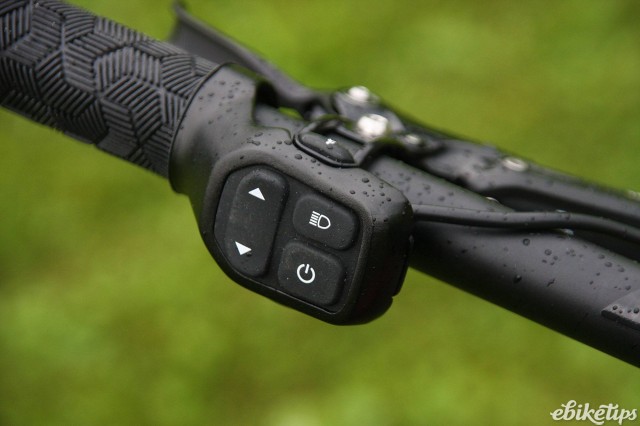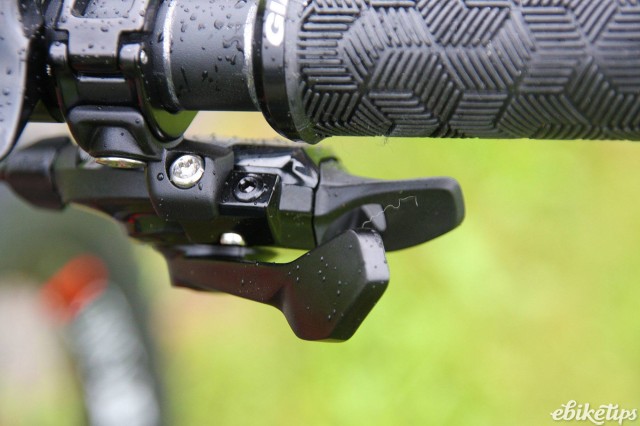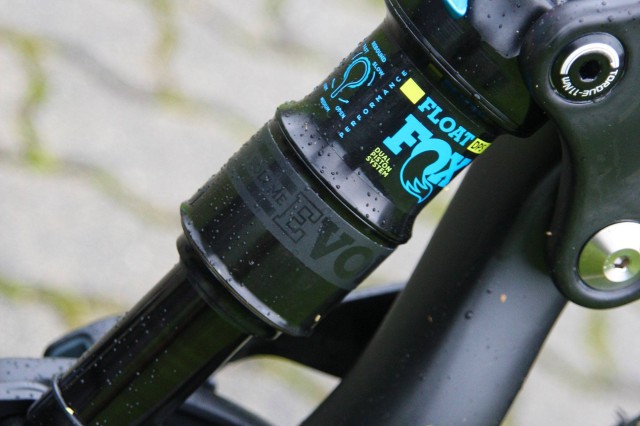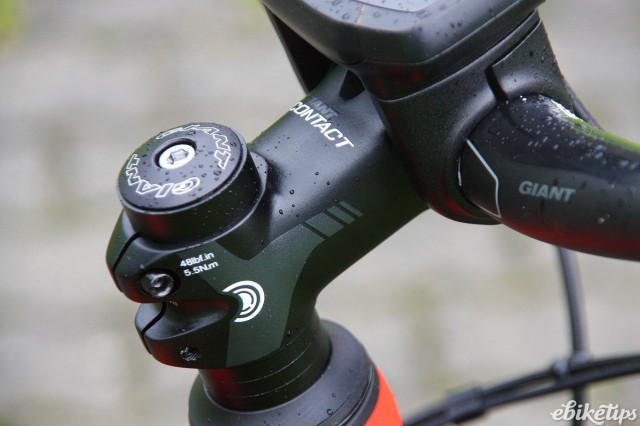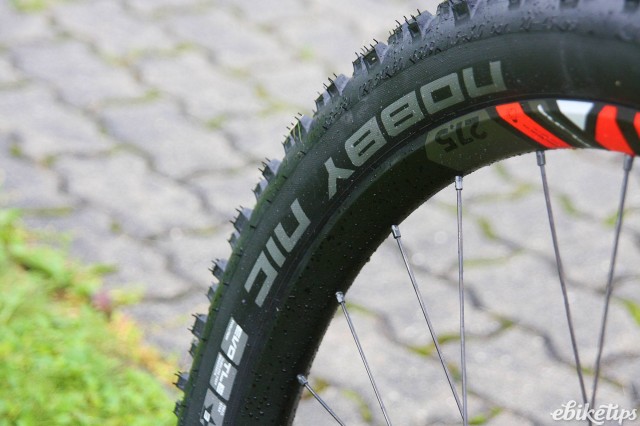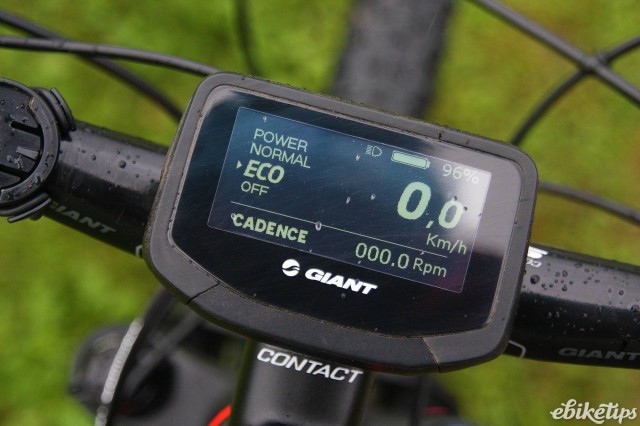Giant Full E+ 0 SX
Overview
- Maestro suspension is sensitive and active under braking
- Big battery gives good range
- New RideControl computer and remote are a big improvement
- SyncDrive motor takes some getting used to
- Motor design puts a lot of material below the bottom bracket
Giant have launched a new version of their Full E+ electric mountain bike to replace the current model, which has been around for three years now. They invited us out to Austria to give it a test ride, and it’s good news: the new Full E+ is a step forward from the old model and it’s a very likeable all-mountain bike with enough juice to get you up some big hills and suspension that’s sorted for keeping you aboard on the way down. The power curve of the motor isn’t maybe as intuitive as some others but overall it’s a very positive bike and definitely an improvement.
Giant have identified system integration as one of the key areas in electric bike development, and to that end they’ve worked hard to make the power train on the Full E+ as much a part of the bike as possible. The battery looks like it’s built into the frame; it is and it isn’t. Giant are in the unique position that they’ve been working with Panasonic (and formerly Sanyo) for over a decade in joint battery development and that means that the Giant battery is designed in its entirety, with a custom battery management system and a custom case built to Giant’s spec. That dovetails nicely with the downtube but it’s not structural: the flattened down tube is designed and hydroformed to do the job on its own. That makes for a more cost-effective build. Giant also have access to very high energy density Lithium-Ion cells; there are 40 in the Full E+’s 500Wh battery.
Giant have migrated their Maestro suspension platform to the Full E+. This is a big deal for Giant, and we’re told it was the subject of some fairly intense discussion at the company. Maestro isn’t new – it’s been around for over a decade – but it’s always been kept as a premium option. Is an electric mountain bike a premium bike? Well, we don’t have confirmed uk pricing for the Full E+ but they’re not going to be cheap bikes. It wasn’t really about that, though: more about whether riders who’d buy a premium bike would consider an e-bike. On the basis of our first ride, they should. But more on that later.
So Full E+ gets Maestro, which is designed to be a fully active platform, independent of braking forces. This new bike also gets a first: The Maestro rocker linkage is an advanced forged composite, a new manufacturing process developed in-house by Giant. Lighter, stiffer and stronger than an alloy rocker, the new composite rocker will presumably roll out to the Trance, Reign and Glory non-powered ranges.
The shock is updated too: the Full E+ uses the new Trunnion mount shock which mounts to the frame through the body of the shock. You get a shorter shock and less leverage, and you can run the shock at lower pressure which improves performance.
Giant are staying with their Yamaha Syncdrive motor. It puts out 80Nm of torque and Giant have customised the assist logic with their Ridecontrol computer. There’s three levels – Eco, Normal and Power – giving 80%, 180% and 300% of assistance respectively. The Yamaha motor is direct drive, which means it's possible to use a double chainring. The 0 SX build has a SRAM EX1 drivetrain but the lower spec 1 and 2 builds get a double up front.
The new Ridecontrol head unit and remote are worth a mention too. The remote is integrated into the grip lockring, so it always sits in the right position without interfering with the mounting of brakes, lockout remotes or shifters. The central display has a new alloy housing for better durability, and it also gives you more information: crucially, it’ll give you battery info in graphical form, as a percentage, and in terms of range, which it couldn’t do in the previous incarnation. There’s a USB port on the side to charge your devices and it’s Bluetooth compatible which means updates will be a simple process via a dealer app.
Wheel-wise Giant have opted for the e-bike favourite of 27.5+, although their setup is a 30mm rim and a 2.6” Schwalbe Nobby Nic tyre, so it’s certainly not the biggest we’ve seen. They’ve also moved to the wider 148/110 Boost standard wheels for better stiffness. The frame and fork will take up to a 3” tyre.
The ride
The Full E+ is fun to ride. We had the 0 SX version to play on which is top of the range: you get SRAM’s e-bike-specific EX1 drivetrain, A 160mm Rock Shox Lyrik fork and matching rear shock (although our test bikes had non-standard Fox shocks). Sadly it doesn’t look like the 0 SX will be coming into the UK, although the cheaper two builds, which share the same suspension platform, will be. Straight from the off it’s a comfortable bike. The geometry is more racy than the last incarnation of the Full E+ but not quite as stretched as the Trance; this is because the motor requires a longer chainstay so the front of the bike is slightly shorter so as not to unduly increase the wheelbase. It’s higher at the front too, with a 67° head tube angle that’s slacker than the last bike.
It’s a sensible position and the bike is easy to pilot. Going up you’ll be spending all your time under some sort of power. Eco is plenty for shallower drags and for technical riding there’s very little that’s so steep, and also so grippy, that you need and can use the power mode. It’s definitely useful for getting back up to the top of fun stuff on tarmac or fire roads though. On our test ride we had a final 10-minute descent with a 400m drop and I very much wanted to try it one more time. Without an uplift you’d probably not bother with the half-hour climb but with plenty of sauce left I stuck the bike in the highest mode and I was back up the top, fresh, in 15 minutes. It cost me about 40% of the battery. But it was worth it.
The motor has a different kind of assistance curve to the more common Bosch system. It’s not necessarily better or worse, just different. The motor control is more heavily weighted towards torque so it’s certainly a drive system that rewards some input. The sweet spot for pedal cadence is around 70-80rpm, which isn’t that high; go higher and the assistance tails off, which is more or less the opposite of what the Bosch system does. On a Bosch bike you see a tricky section coming and shift to a lower gear to up your cadence and give yourself a boost, whereas on the Giant it seems to be better to rough it out in the gear you’re in.
Personally I think the Bosch algorithm better mimics the way you’d deal with difficult stuff on a non-powered mountain bike, although that doesn’t necessarily make it right. There’s plenty of power there, enough that the motor had too much torque for some of the slippier sections we encountered going up. When that’s the case it’s better to ease off the power to Eco and try and finesse the bike up the technical sections, although if things get very steep the overall weight of the bike becomes a big factor too.
Brose are the other major player in the mountain bike mid motor market: their motors power the Specialized e-MTBs and bikes from many other brands including BH, Rotwild and more. The SyncDrive motor has a similar feel at times to the Brose, with more emphasis on torque sensing and less on cadence. The Brose is the better of the two for technical climbing though, with a really intuitive feel when you’re trying to finesse a bike up a slippery ascent. You can put it in high power mode and tread lightly (or less so) to get the power you need. The SyncDrive is good too, but not quite as effective at lower cadences.
The new RideControl computer and remote are really good. The remote sits just where you need it and switching between modes happens with a positive click that you can feel through your gloves. There’s a button on the bottom which changes the lower data field on the display; you can have max or average speed, range, trip distance, odometer and cadence. There’s a walk assist button on the top too which is handier than you’d think on a mountain bike: once you lose traction and slip off it can be handy on the push up to your next start point.
You don’t necessarily need power to go back down again. The Yamaha motor is direct drive, there’s no gearing between the cranks and the chainring. That makes it much better than the Bosch motor when the power’s off. The weight of the bike is still an issue when you’re trying to accelerate under your own steam, but the transmission feels direct where the Bosch is a bit draggy. There are certain downhill sections where the motor power can lead to understeer and pull you off line, so the Giant is good where a downhill path gets slow and twisty.
The suspension was excellent throughout. The Lyrik fork has enough travel to soak up some big hits and the Maestro linkage at the back does a good job of isolating the braking forces; the system is still built to the original patent that’s over 10 years old, and the reason Giant haven’t changed it is because it works. For seated climbing there’s minimal bobbing of the rear. If you stand up and push then things get a bit bouncy but it’s no worse than other mid-travel bikes; the fork is a worse offender than the frame but you can wind the travel down to compensate.
You notice the extra weight of the bike when you’re turning in on faster, looser corners and when it lands after you put it in the air, but most of the time it’s pretty neutral handling and feels a lot like a non-powered trail bike. We took the Full E+ down some fairly technical descents and it never felt like it was at its limit, although I did notice that I hit the bottom bracket on occasion; it’s not especially low in itself, but there’s quite a lot of motor sitting underneath it, more so than some other designs out there.
The range
I managed a 40km loop on the Full E+, with 2,100m of climbing. The nice folks at Giant gave me a new battery just after half way (even though it was still 60% full) so I happily booted round the second half of the ride in Power mode safe in the knowledge that I’d not be running out of juice.
So the first section of the ride was 26km, with 1,100m of climbing (mostly in Eco with sections in Normal), and I used less than half the battery. The second was 16km, with 1,000m of climbing, mostly in Power mode, using 80% of the battery.
Giant claim a range of 65-130km in Eco, 40-75km in Normal and 20-40km in Power. That seems fairly realistic, although you’ll need to be doing a pretty boring and flat mountain bike ride to get anywhere near those higher figures. If you’re in the mountains then the lower figure is something to aim for. You won’t do the whole ride in Eco, so 65km isn’t feasible if you’re doing any significant ascending. A loop of 40-45km with some serious climbing is achievable though, and that’s probably enough range for most people for a single ride.
Overall
Overall riding the Full E+ 0 SX was a good experience and it’s certainly a more complete bike than its predecessor. The switch to the Maestro suspension platform has reaped dividends in the handling of the bike and the SyncDrive motor continues to impress. There’s not a lot to choose between the main mid motor systems and your style of riding will determine, up to a point, which one is best for you. The SyncDrive is a solid all-rounder that’s good for mid-cadence riding and will probably suit less experienced riders a bit better; the lack of assistance at high cadence means riders who like to spin, or attack technical trails in a low gear, won’t find it as intuitive.
Range from the 500Wh battery is very good, with properly mountainous loops of 40km or more on technical trails possible with some judicious use of the lower power settings. The motor and battery position give the bike a neutral weighting and it’s rarely compromised by its extra weight on the downhill sections with the odd slide or heavy landing the only real penalty.
Spec-wise the Full E+ 0 SX is a high-ticket machine and there’s nothing there that’s not a good quality component. SRAM’s EX1 drivetrain is specifically designed for the job and works well, and the fork and shock complemented one another really well, taming some pretty big hits. Talking about the spec of this bike is a touch academic when it won’t be available in the UK; we’ll get our hands on a UK-spec Full E+ 1 or 2 as soon as we can for a longer-term test.
2 comments

nothing on this bike, i'm assuming that they're planning to use the grip-mounted remote across more of the range in the future and they've designed it to be future proof
Hi,
Looking at the Giant Prime 3 you reviewed and this (though not this top spec one), and wondering what the headlight button actually does on the Full E, I know on the Prime it turns the lights on but I'm a little confused what it does on the Full E. Any idea?
Many Thanks

